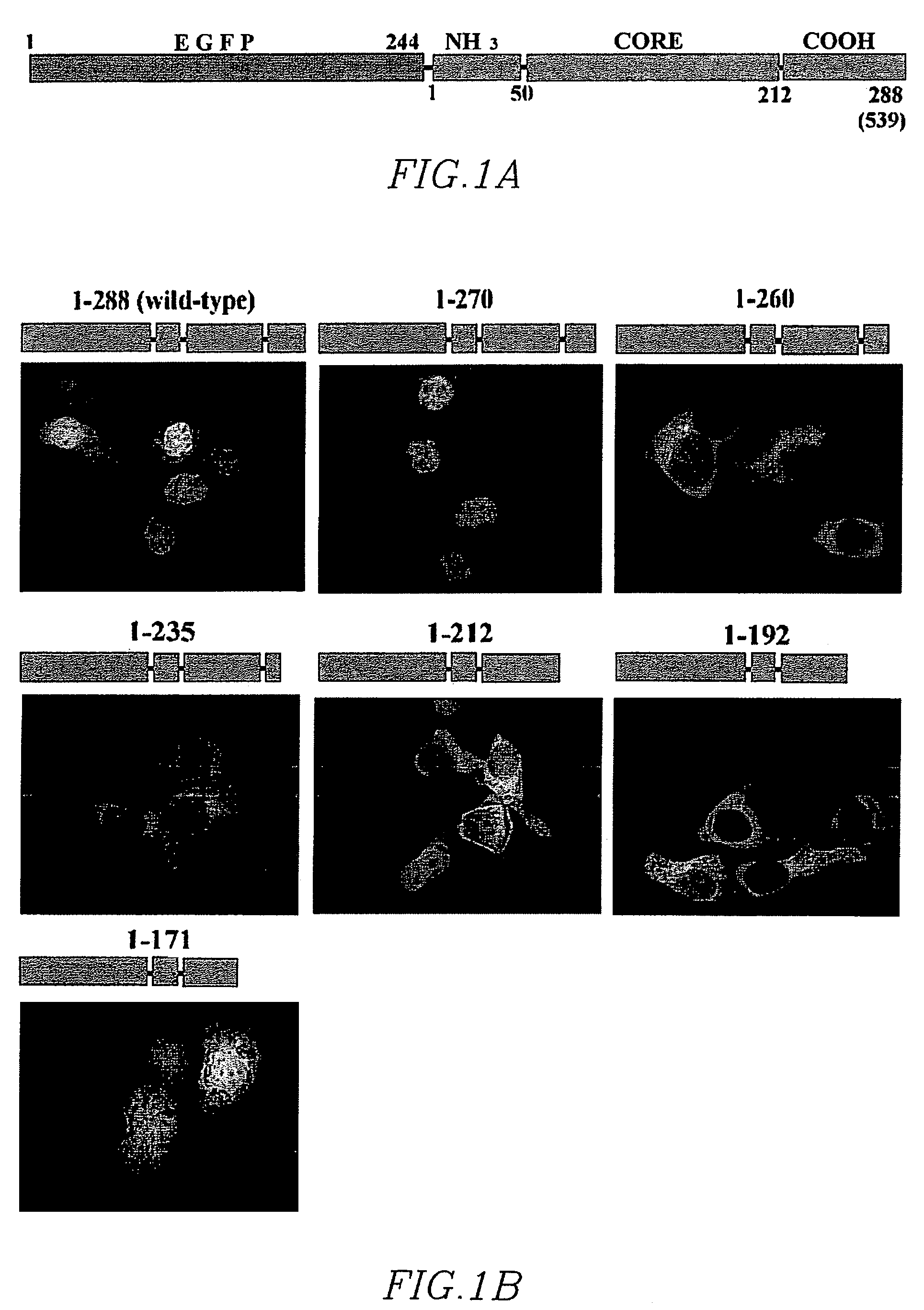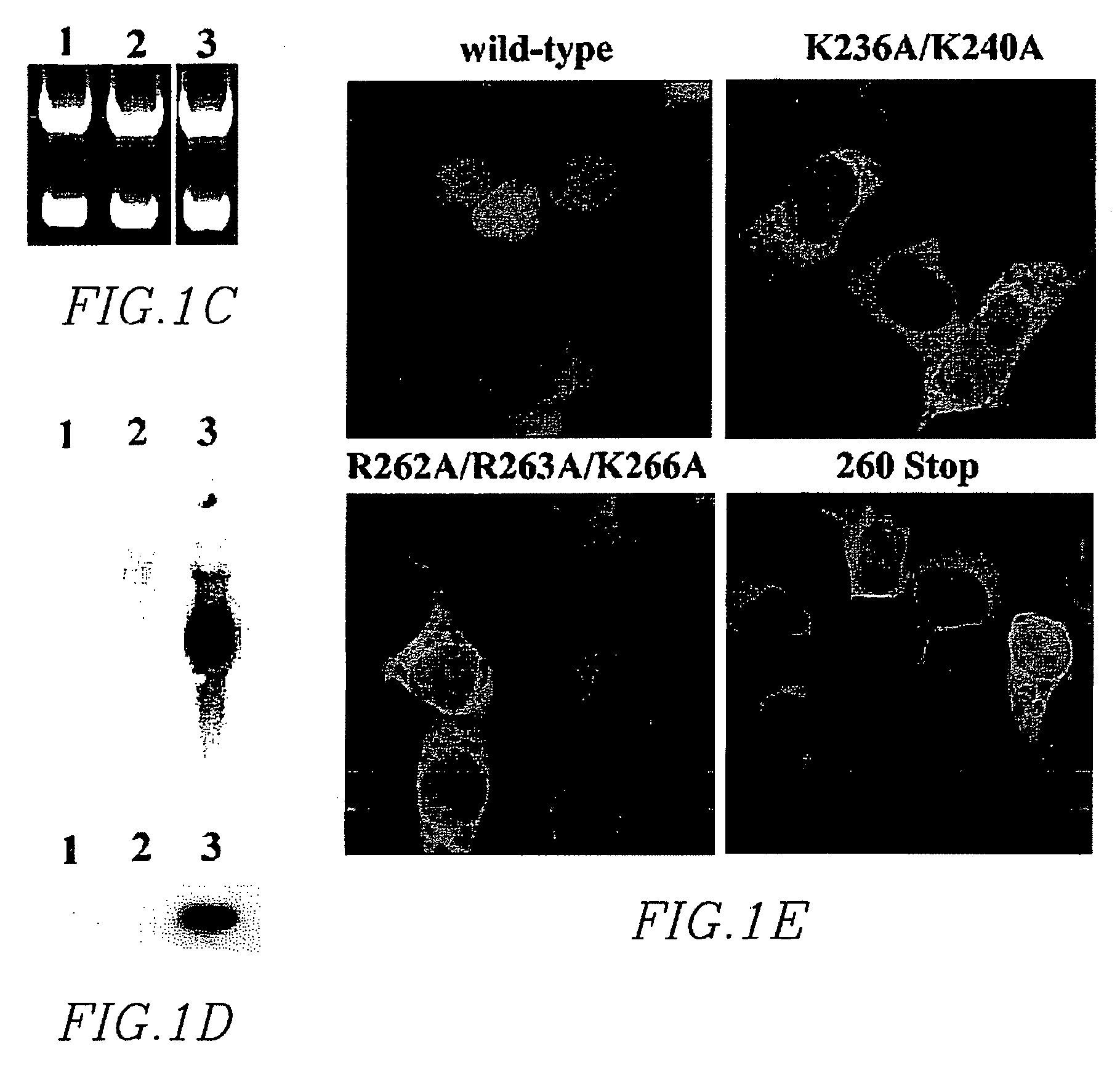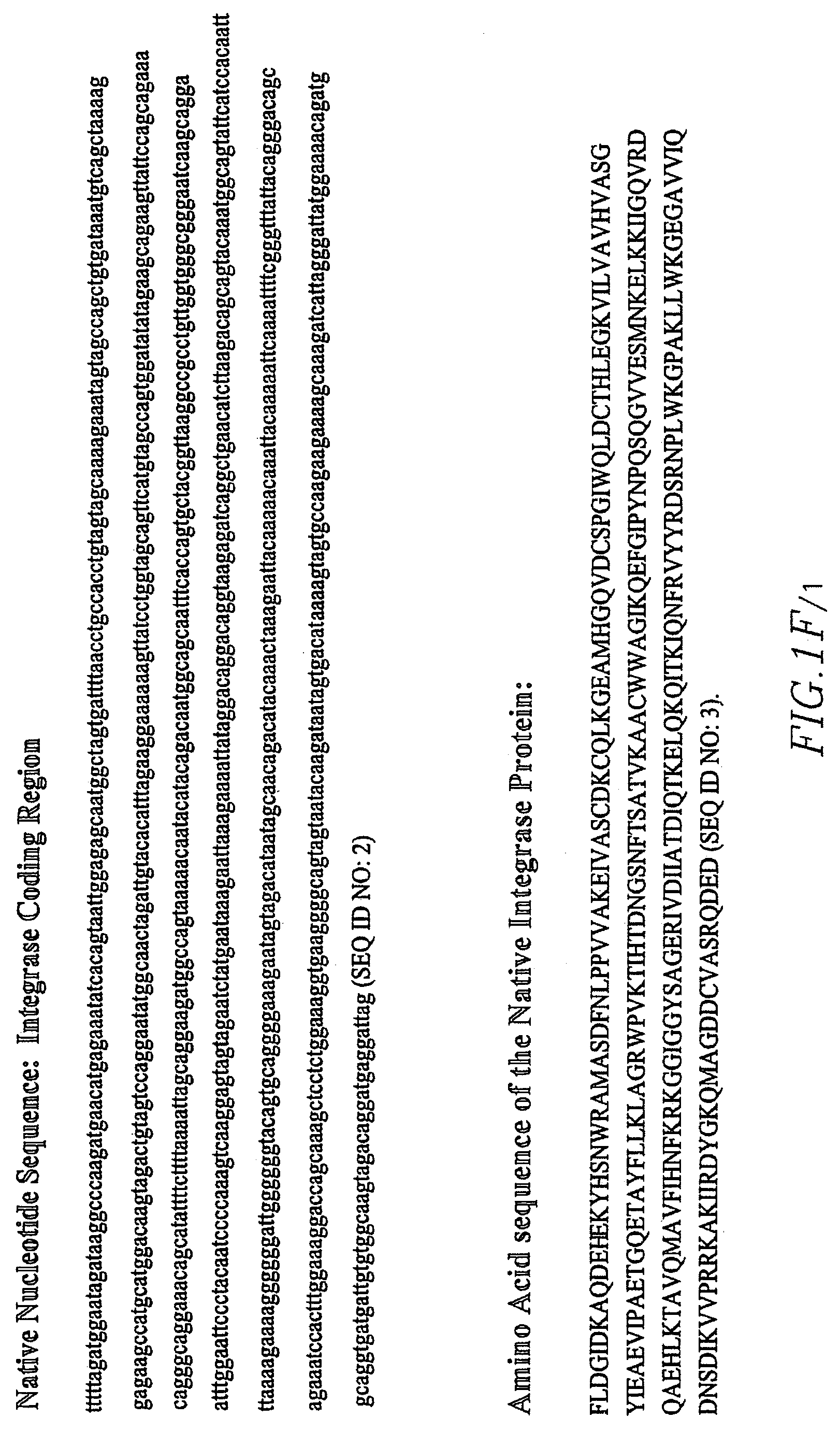Synthetic nuclear localization signal derived from lentiviral integrase and methods of use thereof
a technology of lentiviral integrase and localization signal, which is applied in the direction of peptide source, organic chemistry, viruses/bacteriophages, etc., can solve the problems of challenging and/or reassessing the interpretation of these results, and achieve the effects of inhibiting or abrogating hiv latency, and preventing the spread of hiv
- Summary
- Abstract
- Description
- Claims
- Application Information
AI Technical Summary
Benefits of technology
Problems solved by technology
Method used
Image
Examples
example 1
Residues in the Carboxyl-Terminus of Integrase are Determinants of Nuclear Localization
[0206]Integrase has been mutagenized extensively in the context of numerous functional studies, but a systematic set of mutants has not yet been employed to localize determinants regulating its nuclear import. To identify determinants regulating nuclear import, a fluorescent marker for assaying the subcellular localization of integrase was constructed. (FIG. 1A). The integrase coding region (HIV-1 integrase (IN) open reading frame derived from the CXCR4-tropic, HXB-2 subclone, R7 / 3 HIV strain:
[0207]
(SEQ ID NO: 2)tttttagatggaatagataaggcccaagatgaacatgagaaatatcacagtaattggagagcaatggctagtgattttaacctgccacctgtagtagcaaaagaaatagtagccagctgtgataaatgtcagctaaaaggagaagccatgcatggacaagtagactgtagtccaggaatatggcaactagattgtacacatttagaaggaaaagttatcctggtagcagttcatgtagccagtggatatatagaagcagaagttattccagcagaaacagggcaggaaacagcatattttcttttaaaattagcaggaagatggccagtaaaaacaatacatacagacaatggcagcaatttcaccagtgctacggttaaggccgcctgttg...
example 2
The Integrase NLS is Highly Conserved Among Primate Lentiviridae, and in Particular, Among Multiple HIV Clades
[0217]Conservation of the carboxy-terminus of the integrase protein was demonstrated in multiple primate lentiviridae. Underlined residues in Table 4 of Example 1 indicate highly conserved residues among HIV-1 strains, and various SIVs (FIG. 2). The conservation is complete both in placement and sequence regarding HIV coordinants K236, R262, R263, K266, and somewhat at K240, as well. For the non-primate lentiviridae EIAV, FIV, BIV and Visna virus, the overall pattern of basic residue placement can be discerned as well. Clusters of basic residues are roughly 25-30 amino acids apart. Hydrophobic residues involved in maintaining the SH3 monomeric structure, and those involved in maintaining the SH3:SH3 dimer interface were as indicated.
[0218]520 HIV independent proviral DNA sequences representing major clade groups were subjected to BLAST analysis via the HIV Sequence Database ...
example 3
The C-terminus of HIV Integrase Contains a Transferable NLS
[0219]A hallmark of NLS functionality is the ability of an NLS-containing polypeptide to confer nuclear localization to a large protein that is otherwise cytoplasmic. To determine whether the carboxyl-terninal domain of IN contains such a transferable NLS, two large, fluorescent, chimeric proteins that are unable to enter the nucleus (pEGFP-EGFP, 59 kD and pEGFP-MBP, 74 kD) were constructed. Both proteins localized entirely to the cytoplasm of transfected cells (FIG. 6A). However, constructs comprising a nucleotide sequence encoding for the addition of the carboxyl-terminal domain of IN: gaattacaaaaacaaattacaaaaattcaaaattttcgggtttattacagggacagcagaaatccactttggaaaggacca gcaaagctcctctggaaaggtgaaggggcagtagtaatacaagataatagtgacataaaagtagtgccaagaagaaaa gcaaagatcattagggattatggaaaacagatggcaggtgatgattgtgtggcaagtagacaggatgaggattag (SEQ ID NO: 148), spanning residues 212-288 ELQKQITKIQNFRVYYRDSRNPLWKGPAKLLWKGEGAVVIQDNSDIKV VPRRKAKIIRDYG...
PUM
| Property | Measurement | Unit |
|---|---|---|
| pH | aaaaa | aaaaa |
| sedimentation velocities | aaaaa | aaaaa |
| hydrophobic | aaaaa | aaaaa |
Abstract
Description
Claims
Application Information
 Login to View More
Login to View More - R&D
- Intellectual Property
- Life Sciences
- Materials
- Tech Scout
- Unparalleled Data Quality
- Higher Quality Content
- 60% Fewer Hallucinations
Browse by: Latest US Patents, China's latest patents, Technical Efficacy Thesaurus, Application Domain, Technology Topic, Popular Technical Reports.
© 2025 PatSnap. All rights reserved.Legal|Privacy policy|Modern Slavery Act Transparency Statement|Sitemap|About US| Contact US: help@patsnap.com



